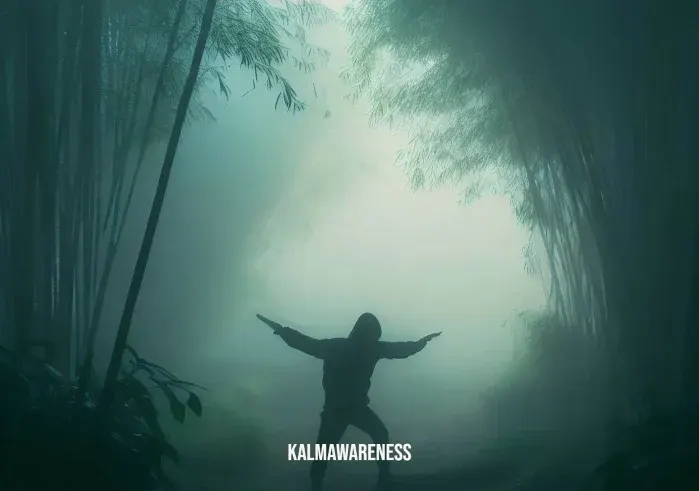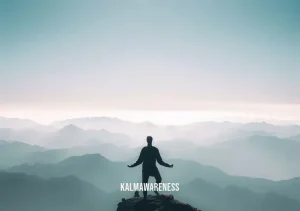Dragon Pose Yoga
Exercise Duration
For beginners, it is recommended to hold the Dragon Pose for about 30 seconds on each side. As you advance in your practice, aim for 1 to 2 minutes per side for a deeper stretch and connection with your body.
Step-by-Step Guide
- Starting Position: Begin in a high plank or plank position with your wrists aligned under your shoulders and your body forming a straight line from head to heels.
- Right Foot Forward: Slide your right foot forward between your hands, placing it closer to your right hand’s outer edge. Keep your knee directly above your ankle.
- Back Knee Lowering: Slowly lower your left knee to the ground, placing it directly behind your left hip. Your toes should be untucked, and the top of your foot should rest on the mat.
- Upright Torso: Inhale deeply as you lift your torso upright, stacking your shoulders over your hips. Engage your core muscles to maintain stability.
- Hands on the Knee: Place your hands on your right knee, allowing your body to settle into the pose comfortably.
- Pelvic Alignment: Keep your pelvis in a neutral position. Ensure that your hips are not tilted forward or backward.
- Hips Opening: Gently press your hips forward, feeling a deep stretch in your left hip flexor. Take slow and steady breaths, allowing your body to relax into the pose.
- Heart Opening: As you feel more balanced, lift your chest slightly and roll your shoulders back. This action opens your heart center, promoting a sense of courage and vulnerability.
- Option for a Deeper Stretch: For those seeking a more intense stretch, you can gently reach your arms overhead, opening up your chest even further.
- Switch Sides: After holding the pose for the recommended duration, slowly release your hands from your right knee and step back into a plank position. Then, switch sides and repeat the steps with your left foot forward.
Dragon Pose Yoga, or Ashwa Sanchalanasana, is an empowering posture that enhances flexibility in the hip flexors and strengthens the legs and core. It’s a symbol of courage and freedom as you embrace the spirit of the mythical dragon during your practice. So, get ready to soar to new heights as we continue our yoga journey in the next part of this article.

Dragon Pose Yoga
In this chapter, we’ll delve deeper into the wonderful benefits of Dragon Pose Yoga, explore who can safely practice this posture, and discover variations suitable for practitioners of different experience levels. Let’s continue our journey with the majestic Dragon Pose Yoga.
Benefits of Dragon Pose Yoga
1. Hip Flexor Flexibility: Dragon Pose deeply stretches the hip flexors, making it an excellent choice for individuals with tight hips. Regular practice can lead to increased flexibility and reduced tension in the hip area.
2. Strengthened Thigh Muscles: The pose engages the quadriceps of the back leg, helping to build strength and stability in the thighs.
3. Improved Balance: Balancing on one leg in this posture challenges your stability, helping to improve overall balance and coordination.
4. Heart Opening: As you lift your chest and open your heart during the pose, you may experience an emotional release, allowing for a sense of vulnerability and inner freedom.
5. Stimulated Abdominal Organs: The engagement of the core muscles in Dragon Pose can massage and stimulate the abdominal organs, aiding digestion and supporting better gut health.
6. Energy Flow Activation: Dragon Pose is associated with the energy of the second chakra, Svadhisthana, which governs creativity and emotional balance. Practicing this pose can help release stagnant energy and enhance vitality.
7. Mental Focus: Holding the pose requires concentration and mental focus, promoting mindfulness and presence during the practice.
Who Cannot Do Dragon Pose Yoga
While Dragon Pose offers numerous benefits, it may not be suitable for everyone. Here are some contraindications and precautions to consider:
1. Recent Hip Injury: If you’ve experienced a recent hip injury or have chronic hip pain, it’s best to avoid Dragon Pose or practice it under the guidance of a qualified yoga instructor.
2. Knee Issues: Individuals with knee problems or injuries should exercise caution while performing this pose. Placing a folded blanket or cushion under the back knee can provide extra support.
3. High Blood Pressure: Dragon Pose involves a deep lunge, which can cause a spike in blood pressure. If you have high blood pressure, it’s essential to avoid straining and opt for gentler hip-opening poses.
4. Pregnancy: Pregnant individuals should approach Dragon Pose with caution. As the pose involves a deep stretch and balance, modifications or alternative postures are recommended during pregnancy.
Variations of Dragon Pose Yoga
1. Supported Dragon Pose: For beginners or individuals with limited flexibility, using yoga blocks under the hands can make the pose more accessible and comfortable.
2. Advanced Expression – Flying Dragon: Once you feel comfortable in the traditional Dragon Pose, you can explore the Flying Dragon variation by lifting your back knee off the ground and extending your back leg straight. This variation requires more strength and balance.
3. Dragon Pose with a Twist: Introduce a twist to the pose by placing your opposite hand on the ground and gently twisting your torso towards the front knee. Twisting adds a refreshing element to the pose, promoting spinal mobility.
4. Dragon Pose with Quad Stretch: From the traditional Dragon Pose, reach back and grab the foot of your back leg with the corresponding hand. This variation intensifies the hip flexor stretch while opening the quadriceps.

Dragon Pose Yoga
In this chapter, we’ll uncover the fascinating history behind Dragon Pose Yoga, explore its spiritual significance, and provide valuable tips to enhance your practice. We’ll also address common mistakes to avoid and offer modifications for practitioners with injuries or limited flexibility. Let’s dive into the depths of this majestic pose.
The History of Dragon Pose Yoga
Dragon Pose, or Ashwa Sanchalanasana, has its roots in ancient yoga traditions. The name “Ashwa” translates to “horse,” and “Sanchalana” means “movement” or “gait.” This pose symbolizes the power and grace of a horse’s movement, combining strength and elegance.
In ancient yogic texts like the Hatha Yoga Pradipika, Dragon Pose is described as a hip-opening posture that stimulates the Svadhisthana chakra, associated with creative energy and emotional balance. Over the centuries, this pose has been passed down through generations, evolving as yoga practitioners integrated their wisdom and experiences.
The Spiritual Significance of Dragon Pose Yoga
In yoga, each pose carries not only physical benefits but also spiritual symbolism. Dragon Pose represents courage, inner strength, and the ability to face challenges with grace and determination. As you ground yourself in this pose, you connect with the Earth’s energy, drawing upon the primal forces that flow within you.
The heart-opening aspect of Dragon Pose invites you to embrace vulnerability and cultivate compassion. By stretching the hip flexors, which are often tight due to sedentary lifestyles, you release energetic blockages, allowing creative energy to flow freely. The posture encourages introspection and self-awareness, making it a potent tool for self-discovery.
Tips for Getting the Most Out of Dragon Pose Yoga
- Warm-Up: Ensure your body is adequately warmed up before attempting Dragon Pose. Engage in some gentle hip-opening exercises and stretches to prepare your muscles.
- Use Props: If you find it challenging to maintain balance or experience discomfort in the pose, utilize props like yoga blocks or a cushion under the back knee for added support.
- Breathe Deeply: Focus on your breath throughout the pose. Inhale deeply to invite expansion and space, and exhale to release tension and resistance.
- Mindful Alignment: Pay attention to the alignment of your front knee, ensuring it stays directly above your ankle to prevent strain.
- Be Patient: Hip-opening poses like Dragon Pose require patience and consistent practice. Be gentle with yourself, and allow your body to open at its own pace.
Common Mistakes to Avoid
- Collapsing Chest: Avoid collapsing your chest and shoulders forward. Instead, lift your heart and draw your shoulder blades down your back.
- Overarching Back: While lifting your chest is essential, avoid excessive arching in the lower back, as it may strain your lumbar spine.
- Neglecting the Back Leg: Remember to engage the muscles of the back leg and lift your knee slightly off the ground to support stability.
Modifications for Injuries or Limited Flexibility
- Knee Support: If you have knee sensitivity, place a cushion or folded blanket under your back knee to alleviate pressure.
- Hip Flexor Sensitivity: For individuals with sensitive hip flexors, decrease the depth of the lunge or opt for gentler hip-opening poses.
- Chair Variation: If getting down on the floor is challenging, practice a modified version of Dragon Pose using a sturdy chair for support.
Complementary Poses
Dragon Pose can be complemented with other yoga postures to create a well-rounded practice. Some suitable complementary poses include:
- Pigeon Pose (Eka Pada Rajakapotasana): Another deep hip opener that complements Dragon Pose and provides a different angle of stretch.
- Cobra Pose (Bhujangasana): This heart-opening backbend counterbalances the forward bend in Dragon Pose, promoting spinal flexibility.
- Warrior Poses (Virabhadrasana I and II): These poses strengthen the legs and core, enhancing stability and balance.




